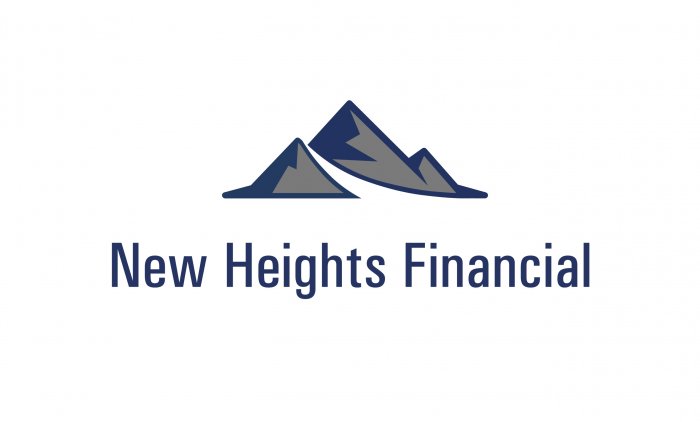Johnnie Roberts
New Heights Financial
Overcoming Retirement Myths
As retirement nears, many individuals feel unprepared and anxious about their financial future. The temptation to rationalize our lack of preparedness may be strong, offering temporary comfort but ultimately preventing us from taking meaningful action. To build a secure retirement, it’s crucial to recognize and overcome these rationalizations.
Common Rationalizations and How to Address Them
The “I’ll Work Forever” Fallacy
Many believe that they may compensate for insufficient savings by working indefinitely. While extending your career may undoubtedly help, it’s not always feasible. Health issues, family responsibilities, or shifts in the job market may abruptly end this plan. Rather than relying on an uncertain future, start saving and investing now to ensure financial stability.
The Myth of Easy Part-Time Work
Some envision taking on simple, part-time jobs during retirement to make ends meet. However, the job market is evolving, with automation and technological advancements reducing the availability of such positions. Building a diverse financial plan that doesn’t depend on uncertain employment opportunities is essential.
“I’ll Cross That Bridge When I Come to It”
Procrastination is a significant barrier to effective retirement planning. Waiting to address financial issues may lead to stress and instability. Instead, take proactive steps now. Create a budget, build an emergency fund, and seek professional financial advice to develop a comprehensive retirement strategy.
Comparing Yourself to Previous Generations
Many assume they may replicate their parents’ retirement strategies. However, economic conditions have changed dramatically. Previous generations often benefited from pensions and a more stable job market. Today’s retirees face longer life expectancies and fewer guaranteed income sources. A modern, flexible financial plan is essential.
Cutting Back Isn’t Always Enough
While reducing expenses is a common approach, it has limitations. Essential costs like healthcare, housing, and basic living expenses may be easily trimmed. Instead of relying solely on cutting costs, focus on increasing income through investments and other financial strategies.
Practical Steps for a Secure Retirement
Assess Your Current Financial Situation
Begin by thoroughly assessing your current financial status. Calculate your assets, debts, and expected retirement expenses. Understanding your financial baseline is the first step toward effective planning.
Develop a Comprehensive Plan
Work with a financial advisor to create a detailed retirement plan. This should include savings goals, investment strategies, and a timeline for retirement. A well-structured plan provides clarity and direction, making it easier to stay on track.
Diversify Your Investments
Building a diverse investment portfolio may help mitigate risks and increase potential returns. Consider a mix of stocks, bonds, and other investment vehicles. Diversification ensures that you’re not overly reliant on any single source of income.
Build an Emergency Fund
Having an emergency fund is crucial for financial stability. Aim to save enough to cover at least six months of living expenses. This fund will provide a buffer against unexpected costs and reduce the need to dip into retirement savings prematurely.
Regularly Review and Adjust Your Plan
Life circumstances and financial markets change over time. Regularly review and adjust your retirement plan to reflect these changes. Staying flexible and responsive ensures that your plan remains effective and aligned with your goals.
Seek Professional Advice
Navigating retirement planning may be complex. Don’t hesitate to seek professional advice. Financial advisors may provide valuable insights, helping you make informed decisions and avoid common pitfalls.
Prioritize Health and Wellness
Maintaining good health is crucial for a fulfilling retirement. Invest in your physical and mental well-being through regular exercise, a balanced diet, and routine medical check-ups. Good health may reduce medical expenses and improve your overall quality of life.
Embrace Lifelong Learning
Stay informed about financial planning and investment strategies. Attend workshops, read books, and follow reputable financial news sources. Lifelong learning empowers you to make smarter financial decisions and adapt to changing economic conditions.
Taking Action Today for a Better Tomorrow
You may take control of your retirement planning by recognizing and overcoming common rationalizations. Start by assessing your current situation, developing a comprehensive plan, and seeking professional advice. Diversify your investments, build an emergency fund, and prioritize your health and wellness. Regularly review and adjust your plan to stay on track.
Retirement planning requires proactive steps and a commitment to continuous improvement. With the right mindset and strategies, you may build a secure and fulfilling future, free from the stress and uncertainty that often accompany inadequate preparation.
Many people have learned about the power of using the Safe Money approach to reduce volatility. Our Safe Money Guide is in its 20th edition and is available for free.
It is an Instant Download. Here is a link to download our guide:

Johnnie Roberts
New Heights Financial
13854 Lakeside Circle
Suite 211
Sterling Heights, Michigan 48313
johnnie.roberts@retirevillage.com
(586) 819-0664

Looking For Answers?
Download our Safe Money Guide and learn more about safe retirement options that can help you achieve your retirement goals safely - FREE!

